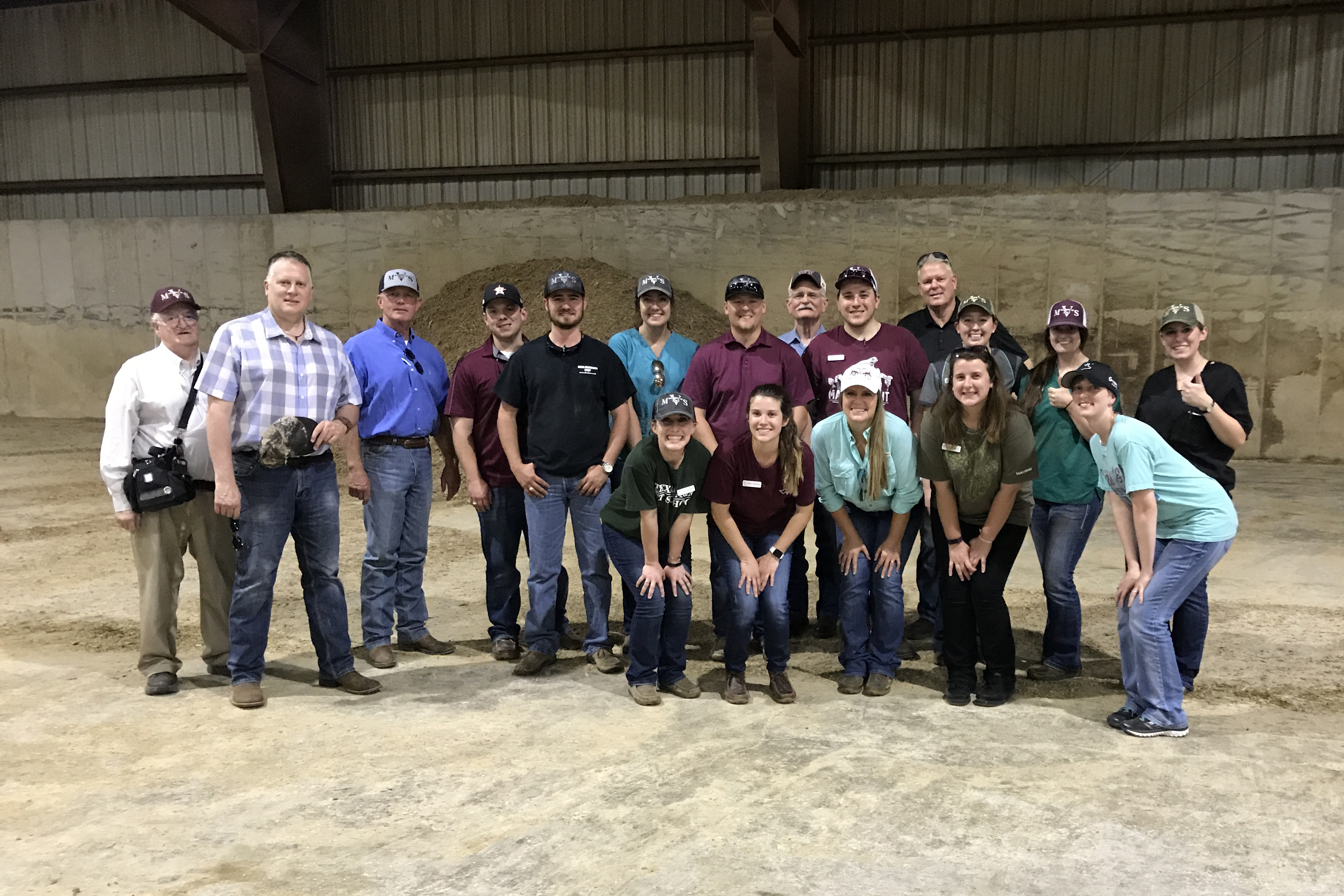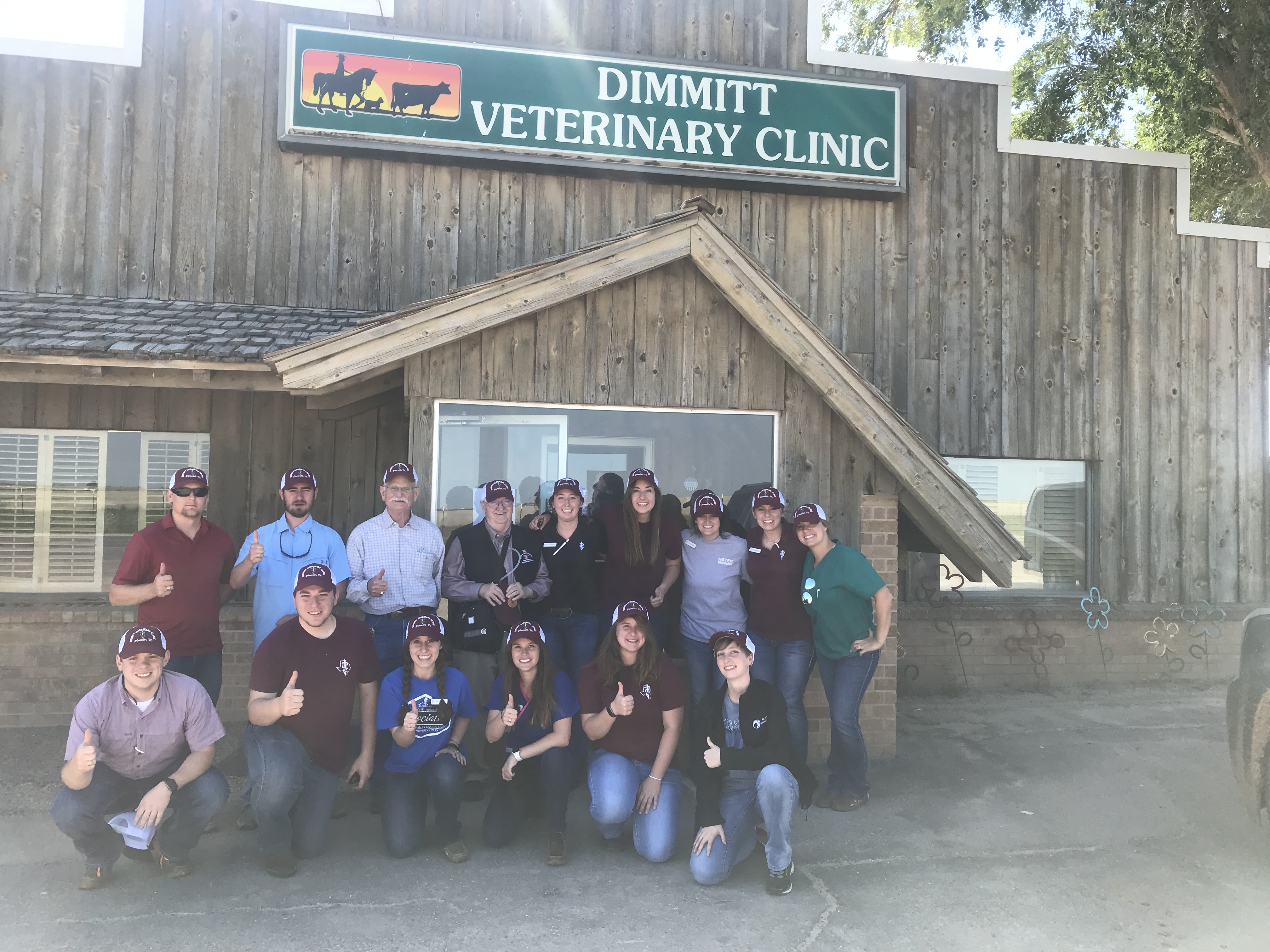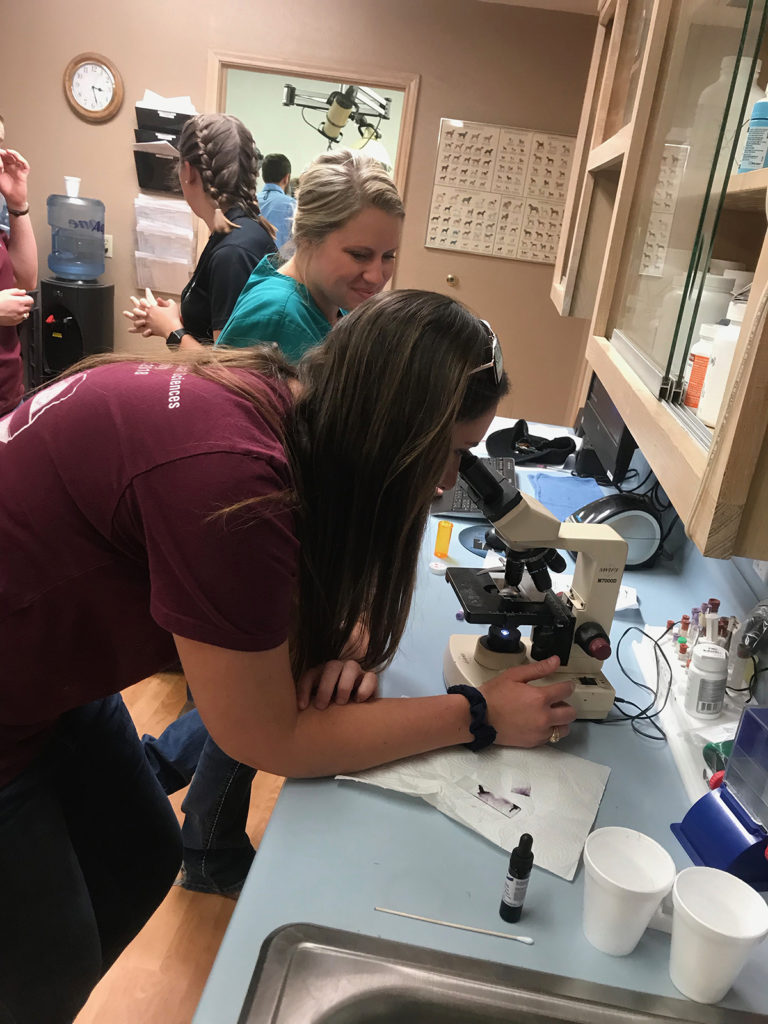West Texas ‘Tour’ Reaches Milestone, Introduces 100th Student To New Avenues For Veterinary Practice
Story by Dorian Martin
As a young boy growing up in Milano, Jacob Willingham started showing pigs at county fairs. He soon was raising his own and widening his agricultural interests to include showing heifers.

So, it’s not surprising that Willingham, now a third-year veterinary student at the Texas A&M College of Veterinary Medicine & Biomedical Sciences (CVM), is interested in working with both large and small animals in a rural area when he graduates.
However, Willingham wanted to explore his options before selecting his career path. That’s why he decided to participate in an intensive tour of the food animal industry and rural veterinary clinics organized by the Veterinary Education, Research & Outreach (VERO) program, an innovative partnership between the CVM and West Texas A&M University (WTAMU) in Canyon.
“I’d been around food animals but not from a veterinary perspective,” he said. “I hadn’t seen everything that is done by a veterinarian in a rural area. I also wanted to go out to West Texas because that’s where a lot of our beef and dairy production is. I wanted to learn how a veterinarian works in that field.”
The Food Animal Production & Rural Practice Tour was created by CVM faculty Drs. Virginia Fajt, Floren “Buddy” Faries, and Dan Posey in 2008 for students who have completed their second year of veterinary school and are exploring all of the possibilities for careers in veterinary medicine.
The tour is hosted on the WTAMU campus by Posey, who is the VERO academic coordinator, as well as Dr. Dee Griffin, VERO director, and Dr. Paul Morley, VERO research director.

Over the past decade, interest has grown, helping the program reach a milestone of enrolling 100 students in 2019.
“When Dr. Fajt and I started this tour in 2008, we were hoping it would be sustainable; we look up 11 years later and are amazed in the impact that this has had in influencing veterinary student’s careers.” Posey said. “Our industry partners, like the Texas Cattle Feeders Association, the Texas A&M Veterinary Diagnostic Laboratory, and the rural mixed animal practices of the Panhandle get to observe the number of students from Texas A&M CVM that are interested in food animal veterinary medicine. This milestone is huge.”
The six-day tour was designed to introduce students to various aspects of the food animal production industry, as well as to rural veterinary clinics. WTAMU is situated near a significant percentage of the beef industry; approximately 30 percent of the nation’s beef cattle are raised within 200 miles of Canyon.
It also helps students understand the veterinarian’s role in agriculture and rural communities by showcasing multiple types of production units and introducing concepts and terminology; students visit prototypical, well-run operations that spotlight veterinary career opportunities in rural areas.
For example, students visited Muleshoe Animal Clinic, a large mixed animal rural practice that employs 13 veterinarians. The clinic works with the dairy and beef cattle industry, in addition to serving the small town’s needs.
The aspiring Aggie veterinarians also experienced Panhandle’s Carson County Veterinary Clinic, where one of the veterinarians specializes in companion animals. The students’ perspectives were further expanded at the Dimmit Veterinary Clinic, which offers services in acupuncture and equestrian sports medicine.

In Dalhart, students learned from Dr. Scanlon Daniels, who has a rural mixed practice that includes the swine and dairy industry. As part of the tour, students went with Daniels to tour a farrowing operation and a Jersey cow operation.
The students learned more about the animal production industry through visiting a Holstein feedyard, a packing plant, WTAMU’s meat science facility, and the Texas A&M Veterinary Medical Diagnostic Lab in Amarillo.
The tour meets with Texas Cattle Feeders Association representatives to learn more about the feeding industry, initiatives to audit cattle welfare, and legislative issues related to animal agriculture.
Ultimately, the tour is designed to provide insights into potential career paths that students might not otherwise consider.
“When they go to the dairies and feedlots, they see how these animals are actually cared for and the important leadership role that the veterinarian plays,” Posey said. “It’s all about taking care of animals.”
This experience not only opened students’ eyes, but helped them make important contacts.
“For me, the tour was a chance to see more of the medicine I want to practice in West Texas and meet new people connected to the field,” said Hannah Johnson, a third-year student who hails from Idalou. “I would highly recommend this tour to anyone interested in food animal medicine or mixed animal practice. West Texas is a great place to live and work and this is a great opportunity to experience it.”
###
For more information about the Texas A&M College of Veterinary Medicine & Biomedical Sciences, please visit our website at vetmed.tamu.edu or join us on Facebook, Instagram, and Twitter.
Contact Information: Jennifer Gauntt, Interim Director of CVM Communications, Texas A&M College of Veterinary Medicine & Biomedical Science; jgauntt@cvm.tamu.edu; 979-862-4216


